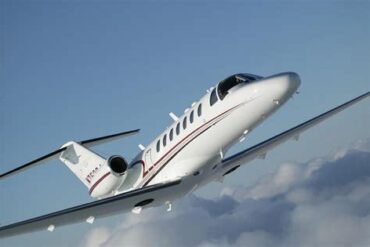The Cessna Citation XLS Gen 2 represents a significant advancement in the realm of light jets, combining impressive performance capabilities with luxurious features and cutting-edge technology. As we delve into the price and operating costs associated with this aircraft, it becomes clear why the XLS Gen 2 is a favored choice among discerning business travelers and private jet enthusiasts alike.
Understanding the Cessna Citation XLS Gen 2
Before discussing costs, it’s essential to understand what makes the Cessna Citation XLS Gen 2 a standout model. This aircraft is equipped with advanced avionics, a spacious cabin, and an exceptional range, making it ideal for both short and long-haul flights. The XLS Gen 2 boasts an impressive maximum range of approximately 2,100 nautical miles, allowing for non-stop travel between major cities such as New York and Los Angeles, or London and Dubai.
Key Features of the XLS Gen 2
-
Cabin Comfort: The interior of the XLS Gen 2 is designed for maximum comfort, featuring a stand-up cabin that accommodates up to 12 passengers. With customizable layouts, high-quality materials, and advanced noise-reduction technology, passengers can enjoy a serene flying experience.
-
Performance: Powered by Pratt & Whitney Canada PW535E engines, the XLS Gen 2 provides impressive climb rates and fuel efficiency. It can reach a maximum cruise speed of Mid 400 knots and has a service ceiling of 45,000 feet.
-
Avionics and Technology: The latest Garmin G5000 avionics suite offers intuitive flight management and navigation systems, enhancing safety and operational efficiency.
Pricing Overview
When considering the purchase of a Cessna Citation XLS Gen 2, potential buyers should be aware of several key financial factors, including the initial purchase price, financing options, and potential depreciation.
Purchase Price
The purchase price of a new Cessna Citation XLS Gen 2 typically ranges from $13 million to $14 million. Factors influencing the exact price include:
-
Customizations: Buyers can tailor the interior and exterior finishes to meet their personal preferences, which can significantly affect the overall cost.
-
Market Conditions: Aircraft prices can fluctuate based on demand and market conditions, impacting both new and pre-owned models.
Financing Options
Many buyers opt for financing when purchasing a Citation XLS Gen 2. Several options are available, including:
-
Loans: Traditional bank loans, often secured by the aircraft itself, provide a straightforward method for financing.
-
Leasing: Aircraft leasing can be an attractive option for those looking to minimize upfront costs and maintain flexibility.
Depreciation
Like all aircraft, the Cessna Citation XLS Gen 2 will depreciate over time. On average, business jets can experience a depreciation rate of about 5% to 10% per year during the first few years of ownership. Understanding this factor is crucial for buyers looking to maintain their investment’s value.
Operating Costs Breakdown
Operating costs are a vital consideration for any aircraft owner. For the Cessna Citation XLS Gen 2, these costs can be categorized into fixed and variable expenses.
Fixed Costs
Fixed costs are expenses that do not vary with flight hours. For the XLS Gen 2, these typically include:
-
Insurance: Insurance costs can range from $20,000 to $40,000 annually, depending on coverage levels and the operator’s experience.
-
Hangar Fees: Hangar costs vary by location but can average around $1,200 to $2,500 per month for a space large enough to accommodate the XLS Gen 2.
-
Crew Salaries: Hiring qualified pilots and crew members is essential for safe operations. Annual salaries can range from $75,000 to $120,000 per pilot, depending on experience and location.
Variable Costs
Variable costs fluctuate based on usage and can include:
-
Fuel Costs: The XLS Gen 2 has an average fuel consumption rate of approximately 180 gallons per hour. With average jet fuel prices ranging from $5 to $7 per gallon, fuel costs can total between $900 to $1,260 per hour.
-
Maintenance Costs: Routine maintenance is crucial for ensuring the aircraft remains airworthy. Annual maintenance costs can range from $50,000 to $100,000, depending on usage and the condition of the aircraft.
-
Landing and Handling Fees: These fees can vary widely based on airport location but typically range from $300 to $1,500 per landing.
Total Operating Costs
When considering both fixed and variable costs, the total operating costs for the Cessna Citation XLS Gen 2 are estimated to be around $1,500 to $2,500 per hour of flight time. This comprehensive figure includes fuel, maintenance, insurance, and crew salaries, providing prospective owners with a realistic view of the ongoing financial commitment required for ownership.
Value Retention and Resale Considerations
One of the key advantages of investing in a Cessna Citation XLS Gen 2 is its strong resale value. Cessna has a long-standing reputation for producing reliable and sought-after aircraft, which contributes to favorable market demand. To maximize resale value, owners should consider the following:
-
Regular Maintenance: Keeping up with scheduled maintenance and repairs ensures the aircraft remains in excellent condition.
-
Documentation: Maintaining detailed records of all inspections, modifications, and maintenance work can significantly enhance resale potential.
-
Market Timing: Being aware of market trends can help owners decide the optimal time to sell.
Conclusion
In summary, the Cessna Citation XLS Gen 2 stands out as a premier choice for those seeking a blend of performance, comfort, and reliability in a light jet. While the initial purchase price can be significant, the operating costs are manageable, making this aircraft a viable option for business and personal travel alike. Understanding the nuances of pricing and ongoing expenses will empower potential buyers to make informed decisions, ensuring that their investment yields the highest possible returns in both utility and value retention.


















